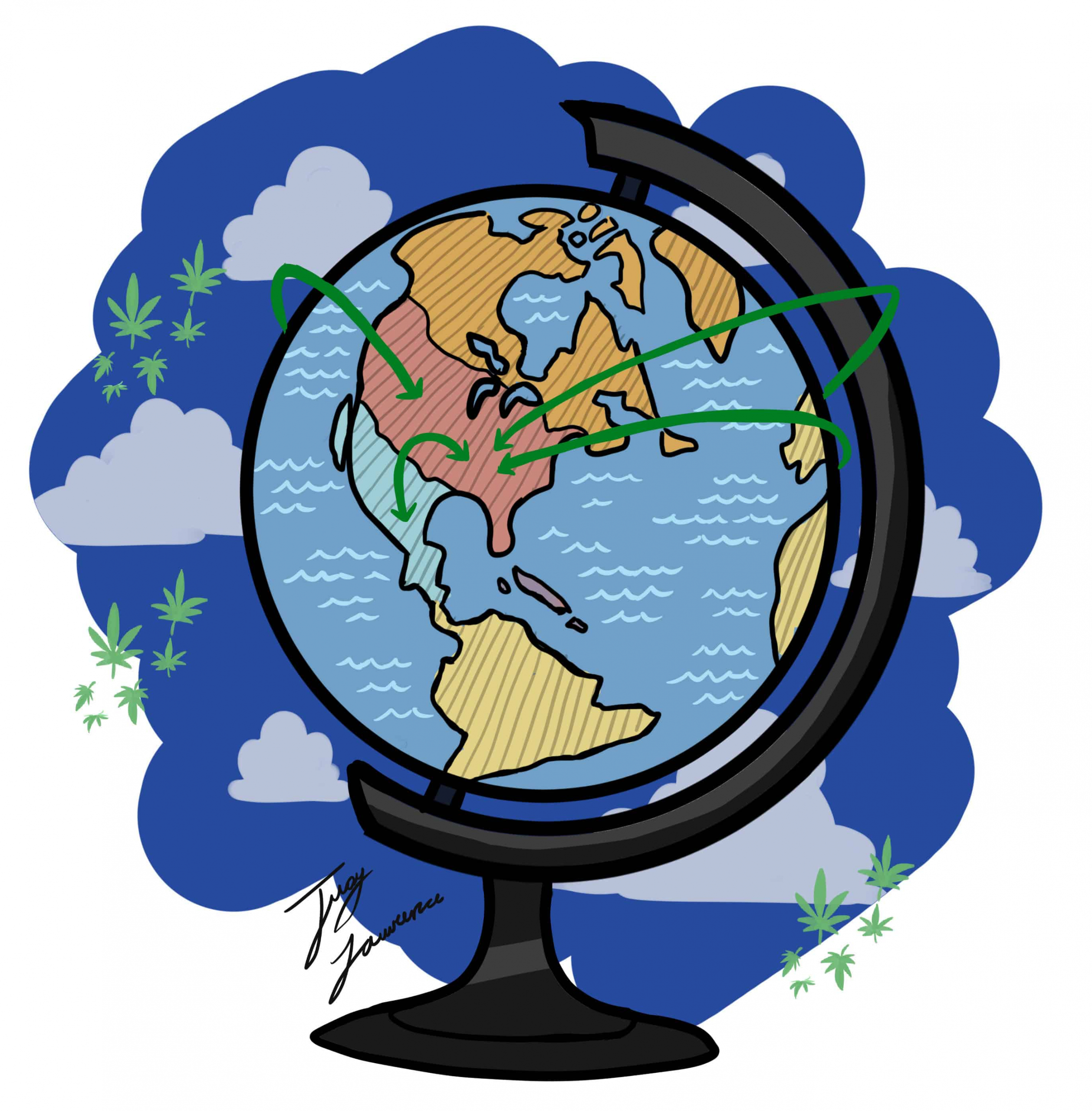The first Cannabis sativa seed trekked from Mexico into the United States alongside fleeing revolutionaries in 1911, marking a transborder exchange more than worth your anti-wall sentiments. Since then, needless to say, it has changed hands and plied boundaries many more times.
As America awakened to its new leafy cohabitant, the Great Depression and its onslaught of unemployment brought an unfamiliar wave of anti-immigration beliefs, alongside usually racist notions of “evil weed.” Before criminalization in 1937, doctors recommended that cannabis users seek treatment for their “reefer madness,” which is also the title of a 1936 cautionary tale about the dark, criminal lives of teens after smoking marijuana.
Amid this campaign against the perils of pot, smoking slipped into America’s jazz clubs, where the drawn-out high gave musicians the enlivened rhythm of their era. Louis Armstrong, for one, admitted to lifelong cannabis use and Jack Kerouac, as said by his first wife, first toked with saxophonist Lester Young in the early 1940s, passing the torch from one culturally defining group to the start of another.
Kerouac’s Beat Generation, also home to Neal Cassady and William Burroughs, demystified weed for the white middle class, marking the entrance of marijuana into the mainstream and the first time pot had a dominant place in literature. For the Beatniks, smoking had invoked a new prose style — freer, more expressive, and unconventional. By introducing them to this wayside Mexican and African-American culture, where many nicknames for cannabis originate, it fed their cultural fascinations.
Kerouac’s contemporary, poet Allen Ginsberg, led one of the first pro-pot rallies. He was both influential to the Beat Generation and the hippie counterculture that subsequently emerged in the ’60s. A sign that hung from Ginsberg’s neck contained all he had to say: “Pot is fun.” His 1965 march was a part of the critical social upheaval and political activism that marked the time otherwise defined by war, discrimination, and gender inequality.
Youth sought change in the neighbourhoods of San Francisco and New York, championing peace and a new sort of social attitude, with pot playing a key role. Before Ronald Reagan’s harsh drug policies dragged pot into a darker light, cannabis counterculture saw its zenith in the daze of 1967’s Summer of Love and the drug-fuelled havoc of Woodstock two years later.
The 1970 Controlled Substances Act, signed by Richard Nixon, made marijuana a Schedule I drug — the same classification as LSD, heroin, and ecstasy, all equal in both criminality and stigma. The next 20 years were fraught with villianizing portraits of weed — Drug Abuse Resistance Education, imposed max penalties, and Clinton’s shy claim that he “didn’t inhale” — and few comical ones: cult classics like Cheech & Chong, The Breakfast Club, and Cameron Crowe’s Fast Times at Ridgemont High.
In the 1990s, however, popular culture took to cannabis counterculture in what is arguably the Golden Age of stoner films; though the decade continued with the strict legal treatment of weed, it created Clerks, The Dude, and Matthew McConaughey’s iconic “alright, alright, alright.” The smoke-filled work of Richard Linklater and Kevin Smith paved the way for the flicks, and even TV shows, of our generation, from Seth Rogen’s leagues of pothead comedies, to the adventures of Harold and Kumar, to the women-centric worlds of Weeds and Disjointed.
Stoner culture has long been a part of our reckoning with something outside the law — exotic, tantalizing, mysterious — but it has become disembodied from its image of the idle and softly rebellious smoker. We are the generation that is killing a counterculture, not with the sermons of “just say no” or prescriptions for “reefer madness.” We use legalization and the disorienting reality of a dispensary on Main Street. That archetype of the softly subversive and perpetually misunderstood stoner is in the midst of finding new tools. Who can blame them?
We will never smoke the same way as other generations did. When we light up, we are cultivating the cultural influences of a substance and finding that there is no longer the need for a caricature of a smoker in a hapless buddy comedy. Societally, we are erasing the stereotypes it furthers and the connotations it carries — lazy, destructive, unfocused, and all the other unabiding traits that accompany cinema’s potheads. We only need the ordinary person to show us that marijuana isn’t a defining lifestyle, but a way to rework the way we live.
Like it or not, weed has been culturally assimilated and, shedding its niches, and stoner culture will eventually lose its subculture status. Gone, at least, is the subculture’s central image — my ‘dealer’ is a hardworking computer science major and, for many, there is no face to pot, no person to codify what using the drug means. We are getting our pot for ourselves, embracing the anonymity of commercial business and mailing services.
Stoners aren’t any type of person anymore and their culture will begin to diversify as well. Films will emerge in which ‘stoner’ doesn’t qualify as its own persona, in which the lead isn’t a white male, in which the label of weed culture becomes what we like to watch when we get high, rather than just watching people get high.


